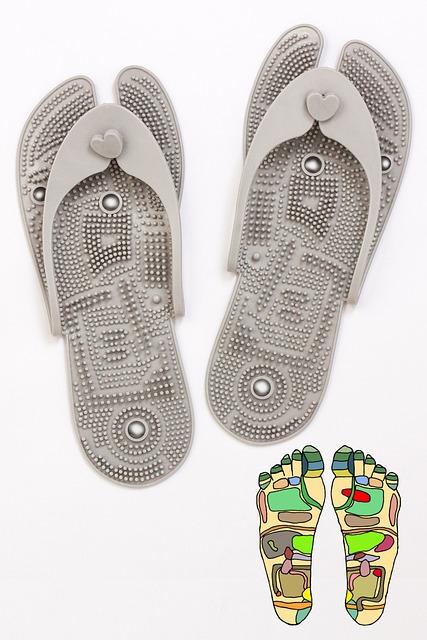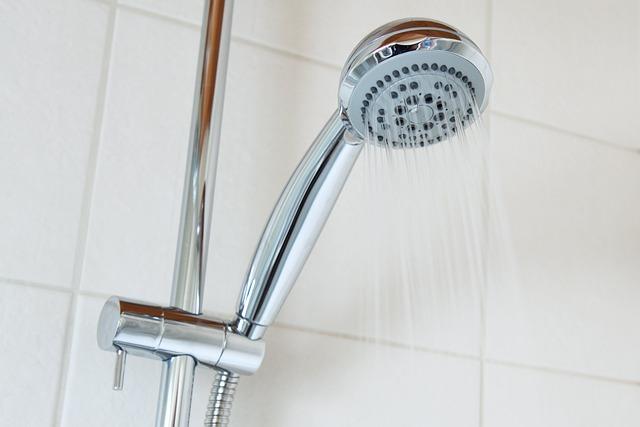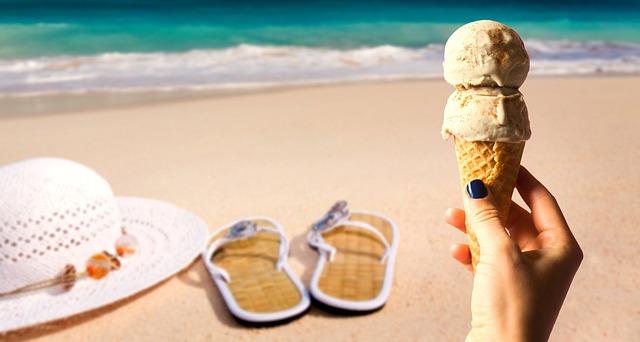Are Cold Showers as Good as Ice Baths? Cold Therapy Comparison

When it comes to invigorating our bodies and boosting our overall well-being, both cold showers and ice baths have gained quite a reputation. But are they equally effective? In this article, we will delve into the world of cold therapy, exploring the benefits and differences between these chilling practices. So, if you’ve ever wondered whether a frosty shower can measure up to a bone-chilling plunge, get ready to dive into the cold therapy debate. From the icy depths of a polar plunge to the refreshing cascade of a chilly shower, we’ll separate fact from fiction and uncover the truth behind these chilling remedies. Get ready to shiver and discover as we embark on our quest to determine whether cold showers truly hold a candle to their formidable counterpart, the ice bath.
Contents
- 1. Exploring the Benefits of Cold Showers: A Comprehensive Analysis of Cold Therapy
- 2. Understanding the Science Behind Ice Baths: How Cold Immersion Speeds up Recovery
- 3. The Therapeutic Effects of Cold Showers: Enhancing Mood and Boosting Energy Levels
- 4. Ice Baths vs. Cold Showers: A Comparative Study of Physical Performance and Muscle Recovery
- The Benefits of Ice Baths
- The Potential of Cold Showers
- 5. Cold Therapy for Athletes: Maximizing Performance and Preventing Injuries
- 6. Holistic Wellness and Cold Immersion: Exploring the Mental and Physical Benefits
- 7. Incorporating Cold Showers into Your Daily Routine: Tips for Optimal Cold Therapy
- 8. Unlocking the Secrets of Wim Hof Method: Utilizing Cold Exposure for Mind-Body Connection
- 9. Cold Showers for Improved Immune Function: How Cold Therapy Strengthens the Body’s Defenses
- 10. The Future of Cold Therapy: Emerging Trends and Cutting-Edge Techniques
1. Exploring the Benefits of Cold Showers: A Comprehensive Analysis of Cold Therapy
When it comes to cold therapy, there are various methods to choose from, but two of the most popular options are cold showers and ice baths. Both of these techniques have been praised for their numerous health benefits, but which one is better? Let’s take a comprehensive look at the benefits of cold showers and compare them to those of ice baths.
Cold showers have gained popularity in recent years for their ability to improve circulation, boost mood, and even aid in weight loss. Taking a cold shower can wake up your body and mind, increase alertness, and leave you feeling invigorated. Additionally, the exposure to cold water can stimulate the release of endorphins, which are known as “feel-good” hormones.
On the other hand, ice baths are known for their intense and immediate impact. By immersing your body in icy water, you create a more dramatic and concentrated cold therapy experience. This can have a profound effect on reducing inflammation, easing muscle soreness, and accelerating post-exercise recovery. Ice baths are often favored by athletes and those seeking rapid relief from pain or inflammation.
While both cold showers and ice baths offer unique benefits, the choice ultimately depends on your personal preferences and goals. If you’re looking for a quick pick-me-up or an energizing start to your day, a cold shower might be the perfect choice. However, if you require more targeted relief from sore muscles or inflammation, an ice bath could be the optimal option. Experimenting with both methods and finding what works best for you is key to incorporating cold therapy into your wellness routine.
2. Understanding the Science Behind Ice Baths: How Cold Immersion Speeds up Recovery
Ice baths and cold showers are both popular methods of cold therapy that can be used to aid in recovery and provide a number of health benefits. While they share similarities in terms of the use of cold temperatures, there are some key differences that set them apart.
One of the main distinctions between ice baths and cold showers is the level of cold exposure. Ice baths involve submerging the body in a tub filled with ice-cold water, typically around 50 degrees Fahrenheit (10 degrees Celsius) or lower. This intense cold exposure can have a numbing effect on the body and lead to a range of physiological responses that speed up the recovery process.
In contrast, cold showers provide a milder form of cold therapy. While they can still provide some benefits, the temperature of the water is nowhere near as cold as an ice bath. Typically, cold showers range between 40-60 degrees Fahrenheit (4-15 degrees Celsius). The lower temperature can still stimulate the body’s circulatory and nervous systems, but to a lesser extent compared to an ice bath.
When it comes to the specific benefits of each method, ice baths have been shown to reduce inflammation, decrease muscle soreness, and enhance recovery following intense physical activity. The cold temperature constricts blood vessels, reducing swelling and flushing out metabolic waste products. On the other hand, cold showers can provide a refreshing and invigorating experience, boosting alertness and enhancing circulation. However, they may not have the same profound impact on recovery and muscle repair as ice baths.
Ultimately, whether you choose to incorporate ice baths or cold showers into your recovery routine depends on your personal preference, tolerance to cold, and specific goals. Some individuals may find the extreme cold of ice baths more effective for muscle recovery, while others may prefer the convenience and milder effects of cold showers. Regardless of which method you choose, it’s important to listen to your body and make adjustments as needed.
3. The Therapeutic Effects of Cold Showers: Enhancing Mood and Boosting Energy Levels
Cold showers have long been known for their invigorating and refreshing effects, but did you know that they can also have therapeutic benefits? Many people swear by the mood-enhancing and energy-boosting effects of taking a cold shower. While ice baths are often seen as the gold standard for cold therapy, cold showers can be just as effective in achieving similar results.
One of the main benefits of cold showers is their ability to improve mood. Cold water stimulates the release of endorphins, which are known as the “feel-good” hormones. This can help alleviate symptoms of depression and anxiety, and leave you feeling more positive and motivated. Additionally, the shock of the cold water triggers a surge of adrenaline, which can give you an instant energy boost, perfect for starting your day off on the right foot.
But what about ice baths? While they may offer more extreme cold exposure, the benefits are generally similar to those of cold showers. In fact, cold showers can be more practical and accessible for most people, as they require less time and preparation. Additionally, cold showers are known to have a smaller risk of adverse effects compared to prolonged ice baths, such as hypothermia or skin damage.
In conclusion, cold showers can be a fantastic way to enhance your mood and increase your energy levels. They offer the same therapeutic benefits as ice baths, with the added convenience and lower risk of adverse effects. So, why not give cold showers a try and experience the invigorating effects for yourself? You might be pleasantly surprised by the positive impact they can have on your overall well-being.
4. Ice Baths vs. Cold Showers: A Comparative Study of Physical Performance and Muscle Recovery
When it comes to enhancing physical performance and promoting muscle recovery, both ice baths and cold showers are popular forms of cold therapy widely used by athletes and fitness enthusiasts. But are cold showers really as effective as ice baths? Let’s dive into a comparative study that explores the benefits and drawbacks of each method.
The Benefits of Ice Baths
Ice baths, also known as cold water immersion, involve submerging the body in near-freezing water for a specified duration. This frigid therapy is believed to have several physiological advantages:
- Promotes vasoconstriction, which helps reduce swelling and inflammation in muscles
- Decreases metabolic activity, slowing down tissue breakdown and minimizing oxidative stress
- Enhances circulation by forcing blood to the core and improving the oxygen supply to muscles
The Potential of Cold Showers
Cold showers, on the other hand, offer a more accessible and manageable alternative to ice baths. While they may not provide the same intensity of cold exposure, they can still offer some benefits:
- Activates the sympathetic nervous system, resulting in increased alertness and energy
- Stimulates blood circulation and lymphatic flow, facilitating the removal of waste products and toxins from the muscles
- Boosts the immune system by increasing the production of white blood cells
| Factors | Ice Baths | Cold Showers |
|---|---|---|
| Convenience | Requires preparation and a dedicated space | Readily available in most homes |
| Intensity | Provides a greater shock to the system | Gentler and more tolerable |
| Time | Typically requires a longer duration | Can be tailored based on personal preference |
While ice baths may have more profound effects on muscle recovery and performance enhancement, cold showers can still offer benefits, especially for individuals who may find ice baths too extreme or impractical. Ultimately, the choice between these two cold therapy methods depends on personal preference, accessibility, and the specific goals of the individual.
5. Cold Therapy for Athletes: Maximizing Performance and Preventing Injuries
The use of cold therapy has long been a favored method among athletes to enhance their performance potential and reduce the risk of injuries. Two popular techniques for achieving these benefits are ice baths and cold showers. While both approaches involve exposing the body to cold temperatures, there are key differences between the two methods that can impact their effectiveness.
1. Depth of Cold: Ice baths involve immersing the entire body in cold water, typically between 50 and 59 degrees Fahrenheit, for a designated period of time. This intense cold stimulates blood circulation, reduces inflammation, and aids in muscle recovery. On the other hand, cold showers offer a less intense form of cold therapy by directing cold water onto specific body areas. While cold showers can provide some of the same benefits as ice baths, the effects may be more localized.
2. Convenience and Accessibility: The availability and accessibility of cold therapy techniques can play a role in a person’s ability to incorporate them into their routine. Ice baths may require a larger space, ample ice, and preparation time. Cold showers, on the other hand, are more readily accessible and easier to add into a daily routine, making them a convenient option for athletes on the go.
3. Personal Preference: Ultimately, the preference for using ice baths or cold showers as a form of cold therapy may come down to personal choice. Some athletes might find the submersion in an ice bath more effective for their recovery needs, while others may prefer the simplicity and accessibility of cold showers. Exploring both methods and listening to your body’s response can help determine the most suitable option for maximizing performance and preventing injuries.
In conclusion, both ice baths and cold showers offer their unique advantages when it comes to cold therapy for athletes. The choice between the two methods depends on factors such as personal preference, convenience, and the desired level of cold exposure. Regardless of the approach chosen, incorporating cold therapy into an athlete’s routine can contribute to enhanced performance and injury prevention.
6. Holistic Wellness and Cold Immersion: Exploring the Mental and Physical Benefits
Holistic wellness practices are gaining popularity as individuals look for ways to improve their overall mental and physical health. One method that has gained considerable attention is cold immersion therapy, which includes both cold showers and ice baths. While both techniques involve exposure to cold temperatures, they offer different benefits and considerations.
Cold showers are a simple and accessible way to experience the benefits of cold therapy. Taking a cold shower can stimulate blood flow, increase alertness, and invigorate the body. Cold showers can also help improve circulation and reduce muscle soreness after a workout. Additionally, they can boost the immune system and promote a sense of calmness and mental clarity.
On the other hand, ice baths provide a more intense and direct cold exposure. Immersing oneself in ice-cold water for a specified period can offer even greater benefits. Ice baths are known to reduce inflammation, speed up recovery, and enhance muscle and joint healing. Moreover, they can improve sleep quality and promote mental resilience by challenging the body’s stress response.
While both cold showers and ice baths have their advantages, the choice ultimately depends on personal preference, accessibility, and desired outcomes. Some individuals may find the convenience and ease of cold showers more appealing, while others may prefer the more intense effects of ice baths. Incorporating these cold immersion techniques into a holistic wellness routine can provide numerous mental and physical benefits, offering a unique and refreshing way to enhance overall well-being.
7. Incorporating Cold Showers into Your Daily Routine: Tips for Optimal Cold Therapy
Incorporating cold showers into your daily routine can have numerous benefits for your overall well-being. While ice baths are commonly praised for their therapeutic effects, cold showers can be just as effective in achieving cold therapy.
Here are some tips to help you optimize your cold therapy routine with cold showers:
1. Start slow: If you’re new to cold showers, it’s best to gradually introduce your body to the cold temperature. Begin with lukewarm water and gradually decrease the temperature over time. This will help your body adjust and prevent any sudden shocks to your system.
2. Time it right: Consider incorporating cold showers into your morning routine. It can help wake you up, boost your energy levels, and increase mental alertness throughout the day. If you prefer taking showers in the evening, try to avoid taking them too close to bedtime as the cold temperature may interfere with your sleep.
3. Take deep breaths: When the cold water hits your body, it’s natural to feel a shock or an intense urge to breathe rapidly. Instead, take slow, deep breaths to help your body relax and adapt to the temperature. Deep breathing can also help reduce any discomfort or tension you may feel.
4. Gradually increase exposure time: As you become more accustomed to cold showers, try gradually increasing the duration of each session. Start with shorter intervals, such as 30 seconds, and work your way up to a few minutes. This will allow your body to reap the full benefits of cold therapy.
Remember, everyone’s tolerance to cold temperatures varies, so listen to your body and adjust accordingly. Whether you choose to incorporate cold showers or indulge in ice baths, both methods offer unique benefits for cold therapy. Give cold showers a try and experience the invigorating effects for yourself!
8. Unlocking the Secrets of Wim Hof Method: Utilizing Cold Exposure for Mind-Body Connection
Cold exposure has gained immense popularity in recent years, with many individuals seeking out various methods to improve their mind-body connection. The Wim Hof Method has emerged as a groundbreaking technique that combines specific breathing exercises, cold exposure, and meditation to unlock hidden secrets within ourselves. While cold showers have been a go-to for many, ice baths are also gaining traction as a powerful tool for cold therapy. But are cold showers really as effective as ice baths when it comes to reaping the benefits of cold therapy?
One key difference between cold showers and ice baths lies in the temperature. Cold showers typically range from 50-70°F (10-21°C), while ice baths, as the name suggests, involve submerging oneself in water filled with ice, with temperatures often reaching as low as 32°F (0°C). This drastic temperature contrast can have a profound impact on the mind and body.
Another factor to consider is the duration of exposure. Cold showers are typically short-lived, lasting anywhere from a few seconds to a couple of minutes. On the other hand, ice baths usually require remaining submerged for a longer period, often around 10-20 minutes. This prolonged exposure allows for a deeper and more intense experience of cold therapy.
When it comes to the benefits, both cold showers and ice baths offer advantages for the mind-body connection. Cold exposure has been shown to activate the body’s sympathetic nervous system, which can improve immune response, increase fat burning, and enhance mental clarity. Additionally, the release of endorphins during cold therapy can lead to a sense of euphoria and overall well-being.
In conclusion, while cold showers can provide a refreshing and invigorating experience, ice baths offer a more intense and deeper form of cold therapy. Depending on your goals and comfort level, both methods can be effective in unlocking the hidden benefits of the Wim Hof Method. Whether you opt for the quick burst of cold from a shower or the chilling immersion of an ice bath, embracing cold exposure as part of your routine can be a powerful tool for enhancing the mind-body connection.
9. Cold Showers for Improved Immune Function: How Cold Therapy Strengthens the Body’s Defenses
Cold showers and ice baths are often mentioned in discussions about cold therapy and their potential benefits for the immune system. While both cold showers and ice baths involve exposure to cold temperatures, they differ in terms of intensity and duration. Understanding these differences can help determine which approach may be more suitable for improving immune function.
1. Intensity and Duration
Cold showers typically involve exposure to moderately cold water for a shorter duration, while ice baths involve submerging the body in ice-cold water for a longer period. The intensity and duration of cold exposure are crucial factors in determining the physiological response and potential benefits for the immune system.
2. Impact on Immune Function
Cold showers have been found to activate the body’s stress response, leading to improved circulation, increased heart rate, and enhanced oxygen delivery. These responses can contribute to better immune function by boosting the production of white blood cells and promoting the removal of toxins from the body.
On the other hand, ice baths provide a more intense cold stimulus that can trigger a more pronounced response in the body. This can lead to increased production of anti-inflammatory substances, reduced muscle inflammation, and improved overall immune function. However, extreme cold exposure in ice baths may not be suitable for everyone and should be approached with caution.
3. Individual Preferences and Goals
When considering cold therapy options, it’s essential to consider individual preferences and goals. Cold showers may be more manageable and accessible for most people, as they require less time and preparation. On the other hand, ice baths may be more appealing to athletes or those seeking intense cold exposure for specific training or recovery purposes.
While both cold showers and ice baths have potential benefits for immune function, it is crucial to listen to your body and adjust accordingly. Experimenting with cold therapy and finding the approach that works best for you can lead to improved immune function and overall well-being. Remember, it’s always advisable to consult with a healthcare professional before starting any new therapy or treatment.
10. The Future of Cold Therapy: Emerging Trends and Cutting-Edge Techniques
Cold therapy is a popular technique used by athletes, fitness enthusiasts, and even those seeking general wellness benefits. While ice baths have long been the go-to method, cold showers are now gaining attention as a more convenient alternative. But are they as effective? Let’s compare the two and explore their benefits.
1. Benefits of ice baths:
– Decreased inflammation: Ice baths help reduce inflammation by constricting blood vessels and numbing nerve endings.
– Faster recovery: Cold immersion promotes muscle recovery by flushing out metabolic waste and reducing tissue damage.
– Pain relief: Ice baths can alleviate muscle soreness and provide temporary relief from injuries or intense workouts.
2. Benefits of cold showers:
– Improved blood circulation: Cold water stimulates blood flow, enhancing oxygen and nutrient delivery to muscles and organs.
– Mental clarity and alertness: Cold showers are known to boost energy levels, increase mental focus, and improve mood.
– Convenient and accessible: Unlike ice baths, cold showers can be easily incorporated into daily routines without the need for additional equipment or preparation.
While both ice baths and cold showers offer therapeutic benefits, choosing between the two ultimately depends on your personal preferences and goals. Ice baths are more intense and can offer deeper muscle relief, making them ideal for post-workout recovery. On the other hand, cold showers are more easily accessible and provide a quick and invigorating way to start your day or relieve general fatigue.
Remember, always start with shorter exposure times and gradually increase the duration as your body adapts to the cold therapy. Whether you opt for the bracing shock of a cold shower or the full-body immersion of an ice bath, cold therapy is a powerful tool for optimizing performance, recovery, and overall well-being. In conclusion, whether you opt for a chilly shower or plunge into an ice bath, cold therapy can offer a multitude of benefits for both your body and mind. While ice baths may be the more extreme option, cold showers still have their merits, making it easier for most individuals to incorporate into their daily routine. Both methods stimulate blood circulation, reduce inflammation, and enhance recovery post-workout. Additionally, cold showers provide a refreshing start to your day, while ice baths offer a concentrated burst of coldness. It’s important to listen to your body and experiment with what works best for you. So whether you’re a die-hard ice bath enthusiast or prefer the milder sensation of a cold shower, embrace the power of cold therapy and embrace the invigorating feeling it brings. Stay chill, stay healthy!















